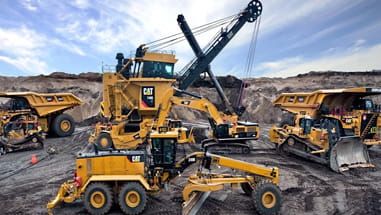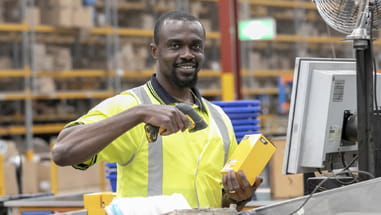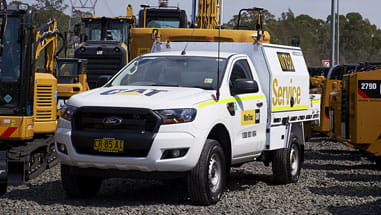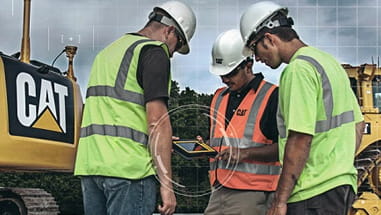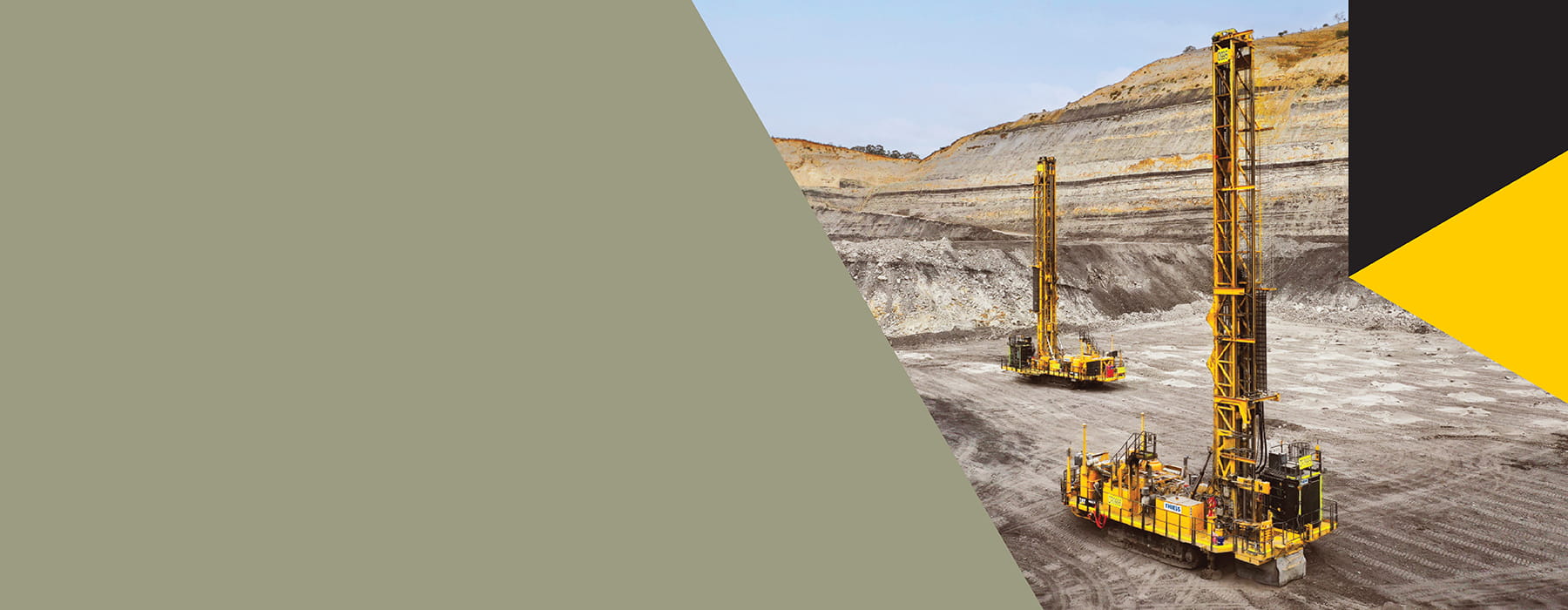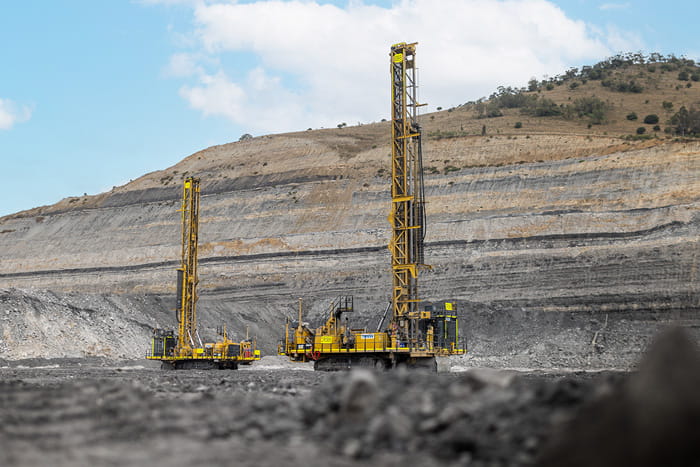With our huge inventory of new, used and rental equipment, WesTrac has the right machine for the job.
As the world looks to meet carbon reduction targets and sustainability goals, mining companies are turning to electrification as a tool to drive down emissions. In this blog and podcast, Mining Business Manager Matthew Spaapen explains how WesTrac is at the forefront of this electric wave.
As someone who has been working among technology and advanced machines for most of my career, I’ve witnessed first-hand the rapid increase in demand for electrification in the mining industry.
During my tenure as Business Development and Deployment Manager for WesTrac’s Technology Department, I was heavily involved in the roll-out of Caterpillar’s autonomous trucks (Command for Hauling) across the Pilbara.
What started as requests for a handful of autonomous haulage trucks in Western Australia’s north, quickly advanced over the course of five years to the roll out of more than 625 of these industry-leading machines operating across the globe.
This demand for modern technology has continued to soar, but now the focus is on electrification and clean energy solutions, which have become omnipresent in many people’s lives.
The groundswell in uptake of hybrid cars and electric vehicles, along with charging infrastructure, is shifting attitudes and fast replacing traditional fossil fuel powered transportation.
With policy at a global scale increasingly demanding more technology deployment to transition towards greener energy generation and storage solutions, and reduction of carbon emissions, it’s hard not to notice electrification in our day-to-day lives.
But this cleaner, greener technology is being used on a much larger scale in mining and construction, powering loaders, dozers, trucks and diggers.
In Australia, more and more companies are turning to electrification as a tool to meet Environmental, Social and Governance (ESG) requirements.
First and foremost is the need, particularly for big companies, to meet self-imposed carbon reduction targets and sustainability goals.
This is partly influenced by investors, whose behaviours are more attuned to ethical and sustainable practices that improve social and environmental outcomes, but also the potential long-term cost savings and return on investment achieved by investing in hybrid or electric alternatives. You can put this down to basic maths - burning less fuel means you pay for less fuel.
WesTrac is at the forefront of this change when it comes to offering hybrid or fully electric machine options for operations in mining and construction settings.
The most common, and most recognised, machines are the Cat® 794, 796 and 798 AC electric drive trucks with an integrated engine and powertrain 100% designed, validated and built by Caterpillar.
Leading the way is the fully battery electric Cat R1700 XE underground loader - a high-productivity, zero-exhaust emission loader with the industry’s only onboard battery. It charges quickly—in less than 20 minutes when paired with two of the durable and mobile Cat MEC500 chargers.
The Cat R2900 XE Underground Loader is another easy-to-use option for underground operations, with the traditional transmission and torque convertor replaced with electric drive. This reduces engine RPM, exhaust emissions, heat generation, noise levels and importantly, fuel burn so while it’s still diesel powered, the loader uses up to 30% less fuel
For construction sites, WesTrac has a diesel electric Cat 988K XE Wheel Loader, with many customers opting to add them to their fleets, thanks to significant fuel reduction capabilities.
While WesTrac has plenty to offer right now, Caterpillar is developing more electrified machines and solutions to support the energy transition.
This supply of Cat machines will help to meet growing demand, mapped out through conversations and evidence collated from customers who will be increasingly pivoting to build greater electrification into their fleets.
But incorporating electrification into operations won’t be easy for every business. For a one-machine company, transitioning might be as simple as introducing one hybrid or fully electric machine. But the larger the operation, the more challenges transitioning will present.
The first issue is access to electricity. For larger operations, there are many factors to consider including how power will be generated, how it will be distributed across operations, and if it’s clean power from wind or solar, will it be sustainable for a 24-hour site?
Then there’s competing priorities for the workforce. Operating a machine won’t just involve knowing where to pick up and take a load for an efficient journey. It will also be knowing where the battery level is and when to charge.
Together, WesTrac and Caterpillar are taking a holistic approach to helping customers with their energy transition journey. We’re not just thinking about the machine, we’re also thinking about how we get energy to the machines on site. WesTrac and Caterpillar help mining and construction companies with energy management using state-of-the-art technology.
We talk to our customers about reticulated power, charging stations and energy transfer solutions that minimize downtime, which can hurt any business.
Cat MineStar™ is an automation suite of solutions that provides a centralised smart system, capturing a plethora of operational inputs to help enable smart decisions. In the near future, MineStar will be able to provide information to help miners make decisions about when to keep an electrified machine going versus when to put it on charge.
Mining White Paper
The Evolution of Automation in Australian Mining
This whitepaper considers the evolution, key drivers, benefits, and some of the lessons learned from automated solution rollouts across the industry. It also looks at how these solutions have shifted from their initial tier-one operator target to most levels of the mining and related services sectors.
While we are starting to see more mining and construction companies plan for their energy transition needs, changing site infrastructure, including turning sites fully electric, is a challenge.
A 100% electric mine site may not be realistic but adapting 90% to 95% of a mine site to electric is an achievable goal. When you look at the trajectory for availability of electric machines, the pipeline of new machines coming online and the capability of clean power generation, we may not be too far away.
Many of the big miners have emission reduction targets of 30% by 2030 and net zero by 2050, but it will take decades to see fully electric mines all over the place.
That’s not to say companies are not planning now. Our customers are already looking at their current footprint, reviewing industry information and availability of products, and engaging with suppliers.
A lot of work has gone into development of Caterpillar’s electric products and a holistic approach to helping customers solve their energy transition challenges. Couple this with the investments Caterpillar and WesTrac continue to make in innovative solutions, and customers can be confident they are planning for current and future mining and construction operations when investing in Cat electric products.
As a primary supplier to the mining and construction industries, we are thinking about and solving the whole problem rather than just selling electric machines.
After all, we are all on the same electrification journey, working together to build a better, more sustainable world.
Author: Matthew Spaapen


